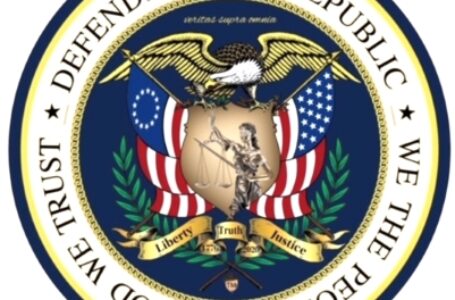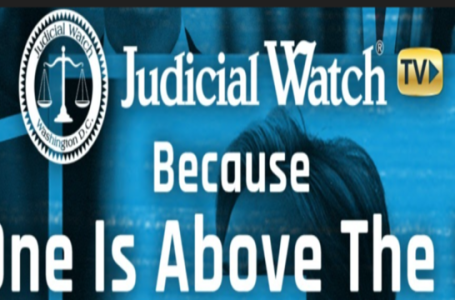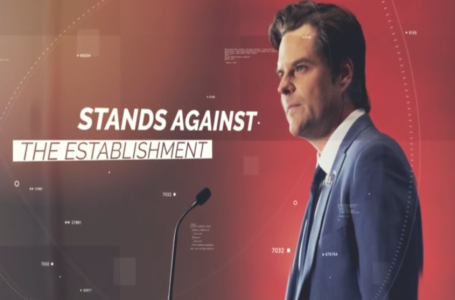California Sent Pandemic Food Stamps To Rich People
By Susan Crabtree for RealClearPolitics
News of the strange COVID payments started circulating quietly among neighbors and friends last year in several affluent beachside communities of North County San Diego.
Food stamp cards carrying as much as $1,700 were arriving in the mailboxes of all students, even those living in multi-million-dollar homes at two local public high schools serving neighborhoods with some of the highest household incomes in the state. The cards were addressed to the students themselves, and some families with more than one child attending the same school received double the amount or more, at least $3,400 worth of cards.
As more people discovered the government-issued largesse, local community online chatrooms were sprinkled with questions on whether the cards were illegal and should be sent back, along with complaints of teens buying sushi and other expensive fare from Whole Foods and other pricey organic markets or using the unexpected funds to throw cookouts and graduation parties. The debit cards can only be used for groceries at supermarkets or Amazon, not in sit-down restaurants or fast-food chains.
RELATED: Psaki Admits Biden Administration Is Handing Out Smartphones To Illegal Immigrants
Many parents of students receiving the cards, who requested anonymity to speak to RealClearPolitics, weren’t sure what to make of the checks, mainly because their families had never received food assistance from the state and federal government before. And even if they had, the sudden cash windfalls without any warning spurred a myriad of questions: Were they sent by mistake?
Would using them trigger tax implications or put their children in a database designating them as recipients of government assistance? The answers from California’s Department of Social Services, which sent the checks, were “No,” “no,” and “no.”
There wasn’t an easy answer for the broader, more penetrating query: Why did their students receive them from the state when more needy families attending different high schools in the same school district did not? Many of these families didn’t even qualify for the $1,400 in federal stimulus checks sent during the first year of the pandemic to households with incomes of $150,000 or less a year and single adults earning $75,000 or less.
The terse information accompanying the P-EBT cards didn’t provide much clarity.
The California Department of Social Services explained that the households were receiving Pandemic-Electronic Benefits Transfer, or P-EBT, cards as part of a federal program intended to compensate families who had children eligible to receive free or reduced-price school meals but not receiving them during COVID-related school closures in the 2020-2021 school year.
Some of the parents of California students who received the P-EBT cards don’t remember the schools providing free breakfast and lunch to all students before COVID. However, there were schools in the same district that offered drive-up free meals for any students who wanted them during pandemic school lockdowns. That led to even greater confusion over why the federal government was trying to compensate families who either utilized that free-meal service or chose not to.
An eligibility survey on a state website to answer the public’s questions isn’t all that helpful either. It includes questions about the child’s age, whether the majority of the students at the school attended in 2020-21 were enrolled in distance learning, and whether the child “was approved” to receive free or reduced-price school meals. If the answer was no to the last question, the survey responds that “at this time, it appears you may not be eligible for P-EBT 2.0 benefits.”
But many of the parents the online survey denied already had the cards with pre-loaded cash in their hands. They have since inundated the California Department of Social Services with their calls and questions. And even after receiving responses – that they were sent the funds in compliance with state and federal law – they remain bewildered by the payments.
In California, the broad eligibility rule for students receiving free meals is that a family of four must have an annual household income of $34,060 or less, and $48,470 or less for reduced-price school meals. In the communities in question – Fairbanks Ranch, Del Mar, Rancho Santa Fe, South Carlsbad, and Encinitas – the median household income ranges from $138,078 to $200,000, among the highest in the state, according to the most recent census data.
RELATED: Biden Wants $2.6 Billion For ‘Gender Equity’ Worldwide
Is This Happening Nationwide?
The scenario most likely isn’t limited to some of Southern California’s wealthiest enclaves. A California DSS spokesperson tells RCP that 854 schools in the state fit into the same federal school lunch category as the two schools in North County San Diego where all students received the cards – Torrey Pines High School and La Costa Canyon High School. (Torrey Pines was ranked one of the best high schools in the nation by Newsweek magazine in 2015 and has 2,479 students, and La Costa Canyon High School, another top-rated secondary institution, has 1,600 students.)
Hundreds of other California schools whose entire student body received the cards because they occupy a similar “universal” federal school lunch category as Torrey Pines and La Costa Canyon, with all students able to receive free lunch and/or breakfast.
If all students at these schools received the cards regardless of income, as appears to be the case, it would amount to more than $1 billion in federal P-EBT going to California students who usually wouldn’t qualify for federal reimbursement for free breakfasts and lunches.
The same issue is likely occurring in other states with schools that participate in “universal” lunch programs offering free meals regardless of income. A local Atlanta news outlet reported earlier this month that certain schools across the state provided the same type of universal lunch programs as California, and noted that “thousands of students” were receiving the cards.
Other states are intentionally winding down the P-EBT payment program and are no longer sending out the cards to any students in their states. Alabama did not reapply for the latest round of benefits to cover this school year and intended for families who miss school because of COVID infection, citing the difficulty of tracking students who are out sick.
Since very early in the pandemic, Congress has tried to provide funds to compensate needy families for missed school breakfasts and lunches because of school lockdowns, initially as part of the Families First Coronavirus Response Act and later by the American Rescue Plan Act of 2021.
Child health advocates say the federal program helped keep millions of children fed during the pandemic. Democrats, led by Michigan Sen. Debbie Stabenow, tout the P-EBT program for providing essential benefits to more than 8 million families during the school closures in 2021, “lifting at least 2.7 to 3.9 million children out of hunger during that time.”
California alone has doled out $6 billion in 5 million P-EBT cards, with 4 million of the cards going to K-12 children in public and private schools, a California Department of Social Services spokeswoman told RealClearPolitics.
The USDA also is rightly credited with scrambling at the beginning of the pandemic to set up an elaborate nationwide network of schools providing bag lunches and other grab-and-go options for parents to pick up and take home for their kids. They even used buses to bring meals to pick-up spots in different neighborhoods.
RELATED: The Tax Increase That’s Hidden In Plain Sight
Misuse of Taxpayer Dollars?
As COVID upended all Americans’ lives over the past two years, Congress passed nearly $6 trillion in emergency aid designed to fight the virus, assist families suffering from job losses, and help stabilize the economy. The funds were largely provided with no strings attached – meaning states and localities didn’t have to account for how the money was spent.
But with COVID cases plunging across the U.S. and masks and many other related mandates being lifted, Republicans recently rejected a White House request for $22.5 billion in additional COVID relief money. Republicans have agreed to provide $10 billion more amid a growing debate about the need for greater accountability for the funds. In his State of the Union address, President Biden announced the creation of a new Justice Department task force to ferret out pandemic fraud and has since named a chief prosecutor to lead the effort.
On March 2, Sen. Mitt Romney of Utah led his Republican colleagues in a letter to Biden, requesting an accounting of how the federal government has allocated trillions in taxpayer funds to combat the pandemic. The letter labeled the spending on COVID “the single biggest expenditure of public funds on one effort in the history of the nation.” Since passage of the American Rescue Plan last February, “questions are mounting about where exactly the additional money has gone,” the senators wrote.
It cited a Washington Post investigative piece with the headline “‘Immense Fraud’ creates immense task for Washington as it tries to tighten scrutiny of $6 trillion in emergency spending.” In one example, according to the report, federal records show more than $81 billion set aside for school districts in response to the pandemic. Yet, there’s no information about what those communities did with the funds once they obtained the grants.
A separate Associated Press investigation in late March found that Broward County, Fla., spent $140 million building a high-end hotel, just one of scores of projects that state and local governments across the country are funding with the coronavirus relief money even though they have little or nothing to do with combating the pandemic.
In contrast, California’s P-EBT program is directly pandemic related, with a goal of keeping children in low-income households fed during school lockdowns and sky-high unemployment rates. Despite a bipartisan group of congressional leaders behind the effort, the distribution of the debit cards in California has been riddled with problems. The state auditor’s office found that the program’s administration failed to serve the intended recipients appropriately.
The P-EBT cards were delivered promptly only in the earlier months of the pandemic, while “families had to wait an average of more than 200 days to receive payments that replaced missed meals from school year 2020-21,” California’s state auditor, Elaine Howle, wrote in her report. Howle said unclear federal guidance, the timing of the national legislation, and technology constraints caused the delays.
The report also found that about 500,000 of the 3.4 million P-EBT cards had not been used as of September 2021, adding up to $182 million in untapped food benefits. Of those, 174,000 cards never made it to the families. The audit recommended that DSS notify schools about families’ under-utilized payments so they can follow up and let them know they’re available.
The auditor’s report says nothing about the opposite problem – that thousands, likely far more, were sent to students in affluent areas regardless of family income.
Tom Schatz, president of Citizens Against Government Waste, said the misdirected funds are sadly not all that surprising and very similar to what happened with the COVID stimulus payments.
“The $1,400 went to people based on their 2019 or 2020 tax returns but had nothing to do with whether they were currently employed making more money than the limits,” he said in an interview, arguing that the stimulus checks over-stimulated the economy, fueling inflation. “By the time the American Rescue Plan came around last year, [states] should have done a better job of only providing the money to people who really need help.”
It’s an example of a larger longtime problem Schatz described in which Congress gives states “greater flexibility” in doling out federal money, especially during national emergencies, so states don’t have to spend time and resources targeting the funds to those who really need it.
“A lot of this gets distributed regardless of income, even when there are income limits or it starts out having an income limit,” he said.
RELATED: Feds: Retail Food Prices To Increase By An Additional 5%
Congressional Intent
Sen. John Boozman, the ranking Republican on the Senate Agriculture Committee, which oversees the school lunch programs, said reports that state governments have sent federal pandemic food stamps to upper-income families raise serious red flags.
“USDA has not chosen to share this information with us, but if true, it raises a number of concerns,” Boozman told RCP in a statement. “Congress never intended for the Pandemic EBT program to be used in the manner described. It is supposed to be administered in a targeted and means-tested way to ensure it reaches those who need the assistance. Misuse of taxpayer funds in this manner is wrong and what fuels erosion of trust in these programs.”
A spokesperson for Sen. Stabenow, who chairs the Agriculture Committee, did not respond to multiple inquiries. Stabenow has pushed for billions of dollars in additional food assistance funds in COVID relief bills over the last two years, including the P-EBT program.
In a December press release, Stabenow touted her efforts to expand access to food benefits for children through a provision that would allow “all children under 6 to be deemed ‘enrolled’ in child care so that they will be eligible for [the] P-EBT benefit.”
Just last week, Stabenow, along with several of her Democratic colleagues and GOP moderate Sens. Susan Collins and Lisa Murkowski, introduced a bill that would allow the USDA to exercise even greater flexibility to continue serving meals to families through the next two summers, continuing the authority the agency had during the pandemic.
When reached by RCP, neither the USDA nor California’s DSS expressed concern about affluent families receiving $1,700 for each student who missed out on free lunches while on school lockdowns.
USDA: Federal Law Allows Payments to Affluent Households
In fact, a USDA spokesperson said that such payments are allowed under federal law. The students in question, the spokesperson said, received P-EBT benefits based on their enrollment at a school offering “universal free meals,” called “Provision 2” schools.
“P-EBT benefits are then paid to any child, provided they also missed out on free/reduced-price meal at school due to a COVID-related absence or virtual learning caused by COVID,” the spokesperson told RCP in an emailed response. “This is consistent with USDA statutory guidance that seeks to replace the social, learning, and health benefits of meals taken at school. P-EBT is only available when students experience school closures due to COVID-19.”
In California, eligible students received $123 a month for every month they were fully distanced from school and $68 a month if their school operated a hybrid learning environment with some in-school classes and some entirely virtual.
“[Additional] Benefits for summer P-EBT were authorized under the American Rescue Plan Act to further assist families disproportionately impacted by the pandemic,” California DSS spokesperson Theresa Mier told RCP.
RELATED: Democrats’ Approach To Rising Gas Prices Reveals Their Economic Illiteracy
Yet, the explanation is not that simple. To reduce school paperwork, Provision 2 schools only have to document income levels of their students once every four years and can apply for a four-year extension “when certain conditions are met,” a USDA website explains.
The schools can provide free lunch to all students and receive federal reimbursements for the meals based on their percentage of low-income students. It’s unclear whether the federal government provides the funding to provide the meals to all students and settles up with the schools when they submit the income level of their students. These figures likely shift from year to year as the student body changes.
Mier said there are 853 Provision 2 schools in California whose total student body received the cards.
There’s also another federal school designation similar to Provision 2, in which all students can partake of free meals regardless of income eligibility. These are “Community Eligible Schools,” which pay for the cost of providing the meals and are then reimbursed by the federal government based on the percentage of students participating in other “specific means-tested programs, such as Supplemental Nutrition Program (SNAP) and Temporary Assistance for Needy Families (TANF),” according to the USDA.
California’s government started mailing cards out in June 2021 for children under age 6 with that mailing completed in 2021. School-age children, kindergarten through 12th grade, started receiving their cards in August 2021 with the mailing completed in November, Mier said.
With record inflation continuing to push food costs higher, the extra cash will undoubtedly help families struggling to put food on the table. Unfortunately, because of a twisted set of federal and state rules, hundreds of millions, if not billions of dollars in the mix, also are helping subsidize the lifestyles of wealthier children – an unexpected boon for these families and grocery stores they frequent.
“I don’t think Whole Foods or Amazon need government subsidies, but here we are,” one local parent remarked.
For Schatz, it’s a prime example of an endemic problem with bloated government spending.
“It’s something that should be stopped or prevented from happening in the future for this program and others created during the pandemic, but it’s always difficult to turn things off once they’re turned on,” Schatz said. “It’s easily understood that people in these areas shouldn’t be getting $1,700 for each of their children, for ‘free lunch’ that they obviously can afford.”
Syndicated with permission from Real Clear Wire.
Susan Crabtree is RealClearPolitics’ White House/national political correspondent.
The post California Sent Pandemic Food Stamps To Rich People appeared first on The Political Insider.















